Use Your Greenie and Avoid Soldering

[February 2023] Among the first talents a new engineer used to learn was to solder something cleanly, with no solder bridges or cold solder joints. But, like all else in the world, everything is new again. Clay shares a way to use a tool we had almost forgotten to do a lot of things.
Although you do not see much of anyone still doing it, soldering is not an entirely forgotten art.
Yes, we are occasionally called upon to solder something. Fortunately, not too often, although recently I had to make repairs to an old transmitter that I maintain. The defective part was soldered into a circuit. So, once again, my trusty soldering pencil went to work.
There was a time when everyone knew how to use a soldering pencil or solder gun. Today, there are many parts in this industry, especially with the advent of computer/IT equipment that features connectors that do not require soldering. A good example is the RJ45 plug that is rapidly becoming the connector of choice for not only computer-based things, but audio as well.
With that being said, there definitely are times you wish you did not have to solder something, especially when you do not have soldering equipment with you.
SOMETHING OLD, SOMETHING NEW
The makers of equipment have been listening and have come up with a number of nifty solutions where connections that used to require soldering can now be made using the little screwdriver commonly called a Greenie
You do remember the Greenie?
![]()
Time was virtually every engineer/tech person had at least one in his shirt pocket. Even after pocket protectors went away, the Greenie remained a favorite tool. But, as I said, in recent years computer-oriented parts and connectors have made the Greenie less useful than in past years.
So, what can be done with a Greenie?
YOU REMEMBER THIS ONE
As an example, consider the familiar DB connector.

The DB connector, available in Male and Female versions with 9, 15 and 25 pins being common, used to always required soldering. It was delicate work, not something you wanted to do standing up on a ladder etc.
Admit it, whenever you were confronted with one of these, it did not make you smile!
NOW, LOOK AT THESE CONNECTORS!
To make things faster and easier and eliminate soldering, a number of new creations or work-arounds came along that involve crimping pins on the ends of the appropriate wires and pushing them into the connector.
That method may still be viable, however, we have newer devices that do not require little pins and a specialized tool. For these, all you need is something to strip the insulation off the end of the wire so you can push it into the ‘euro’ connector and use your Greenie to tighten the screw. These are commonly called Breakout Connectors; I call these “Greenie Compatible.”’
For example, the one pictured below is for a DB -25 Pin Male. This model includes a shell and a clamp to hold the cable.
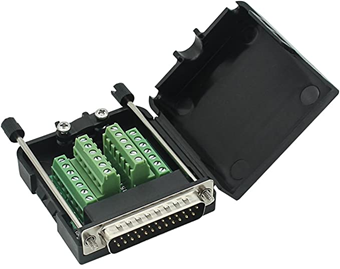
And here is a DB-15 Female – minus the cover shell and cable clamp.
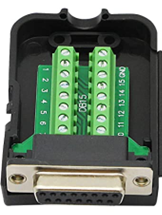
Here are a pair for the popular DB-9. You can get these with or without hoods to cover the individual connections.
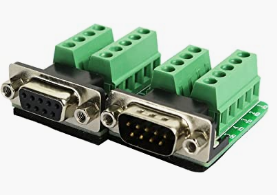
XLR’s TOO!
Newer on the market are these that eliminate the need for soldering when using the XLR connector.


Certainly, these would be useful when working with a cable where there is little or no strain on the cable involved, such as within an equipment rack. For a Microphone cable, where there are mechanical and stress challenges, it seems that those are still best soldered.
AND MORE
Here are a couple of additional examples of Greenie compatible connectors. On the left another brand of Greenie/XLR. On the right, a Greenie compatible 3-conductor phone plug, with cable
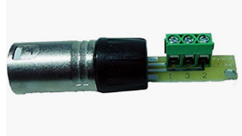
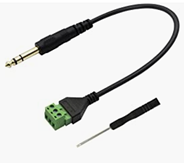
How about a Greenie compatible 2-conductor, ¼ inch Phone Plug or a Greenie compatible RCA type Audio Connector.
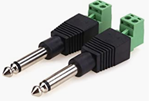

You say you would perhaps like a Greenie compatible 1/8 inch or Mini 3-conductor phone plug? They are available.
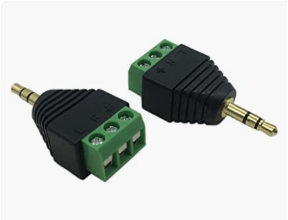
ONE MORE
DC power connectors come in various types. Here is the answer for them.
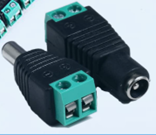
A GOOD SELECTION TO HAVE ON HAND
These little critters sure can make life easier in wiring equipment that is not subject to human interaction.
I think that having a collection of these in your tool box, ready to go, for surprize challenges would be a good idea.
If you have some other “finds” in the area of Greenie Compatibility, please send them my way.
– – –
Clay Freinwald, a frequent contributor to The BDR, is a veteran Seattle market engineer who continues to serve clients from standalone stations to multi-station sites. You can contact him at k7cr@blarg.net
– – –
– – –
